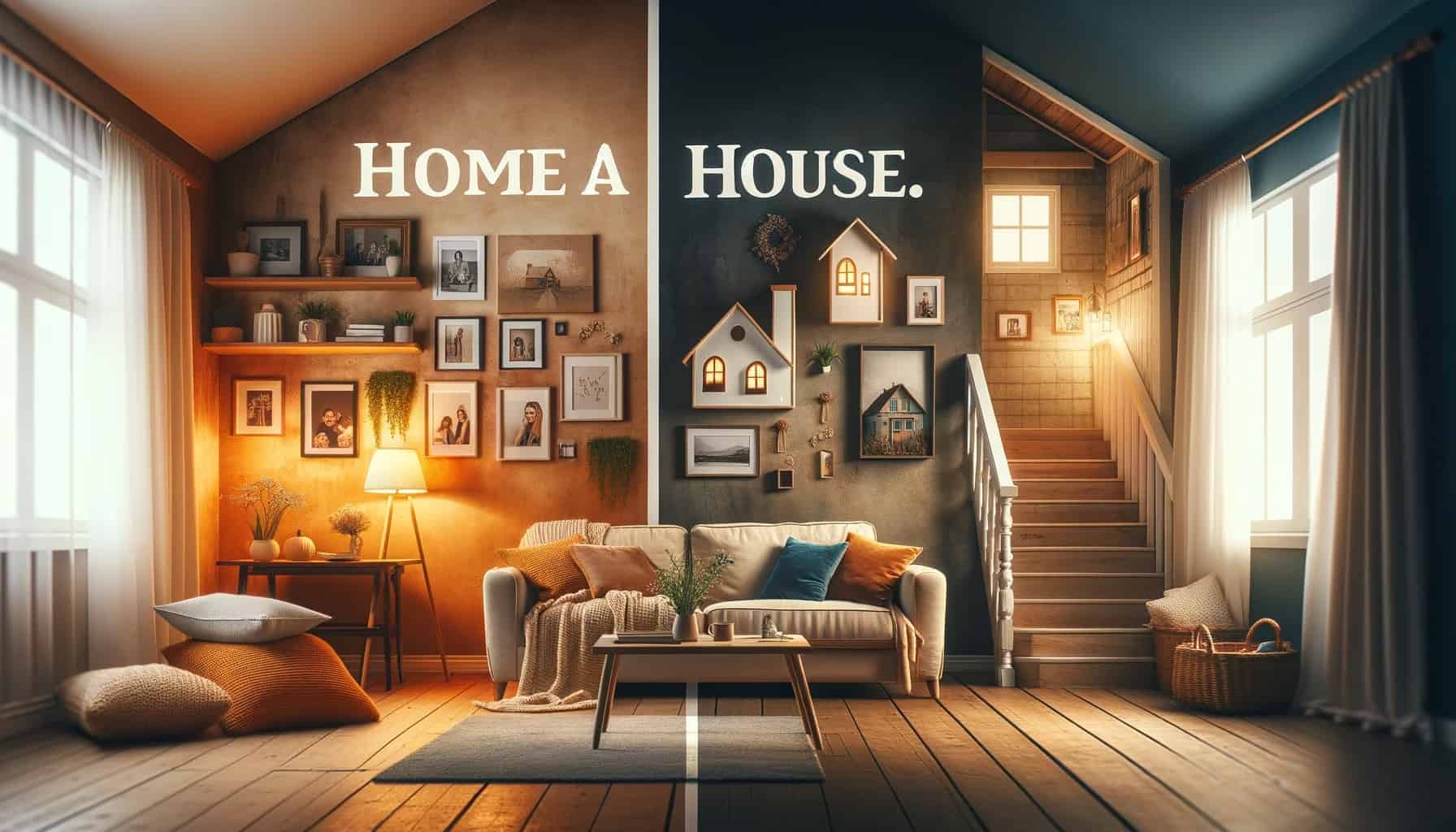Difference between home and house
by Yogi P - November 3, 2023
Difference between home and house | Home vs. House
The concepts of “home” and “house” are often used interchangeably in everyday conversation, yet they connote different meanings. A house is a physical structure, a place made of walls and beams, while a home is an emotional environment, filled with memories and feelings. Here we delve into the essence of what truly separates a home from a house.
The Tangible Structure: House
A house represents a physical edifice constructed to provide shelter. It’s an architectural entity designed for people to live in. The characteristics of a house include its design, build, and material aspects.
Characteristics of a House:
- Physical Entity: A house is a tangible structure made of concrete, wood, bricks, and other building materials.
- Construction: Involves architectural blueprints, construction codes, and building processes.
- Functionality: Designed to provide basic needs like shelter, privacy, and protection from elements.
- Market Value: A house is a property that can be bought, sold, or rented, with its value determined by location, size, and condition.
- Impersonal: Without inhabitants, a house remains a shell, devoid of personality or character.
The Intangible Essence: Home
A home, on the other hand, is more than just a physical space. It’s a sanctuary of comfort, memories, and belonging. A home is characterized by the life and love that permeates its walls.
Characteristics of a Home:
- Emotional Connection: A home is filled with memories and emotions; it’s where personal stories are made.
- Sense of Belonging: It’s where individuals feel secure and accepted.
- Cultural Significance: A home often reflects cultural practices and traditions, becoming a place of heritage.
- Personalization: Reflects the tastes, values, and personalities of those who live in it.
- Sanctuary: Provides a sense of solace and retreat from the outside world.
Key Differences Between Home and House
Here is a summary table that encapsulates the main distinctions between a house and a home:
| Aspect | House | Home |
|---|---|---|
| Essence | Physical structure | Emotional environment |
| Function | Provides shelter and basic needs | Provides comfort, identity, and sense of belonging |
| Value | Market value determined by material aspects | Emotional value immeasurable and personal |
| Construction | Built by constructors and architects | ‘Built’ by the experiences and emotions of its inhabitants |
| Character | Impersonal until inhabited | Defined by the personalities of its inhabitants |
| Uniqueness | Architectural design can be replicated | Unique atmosphere tailored by the inhabitants |
| Impermanence | Can be demolished or sold | The emotional connection remains despite physical change |
| Representation | Represents an asset or investment | Represents heritage, comfort, and personal sanctuary |
| Cultural Reflection | Does not necessarily reflect cultural aspects | Embodies the cultural and familial practices of its occupants |
| Change | Changes with renovation and physical alterations | Evolves with the changing dynamics of the occupants |
Conclusion
While a house can be seen and touched, a home is felt. The foundation of a home is family and love, not just the floors and walls that make up a house. It’s the laughter, the tears, the celebrations, and even the mundane moments that transform a mere building into a nurturing environment called “home.”
As the adage goes, “Home is where the heart is.” It captures the true distinction between a house and a home. A house is a construct; it provides the stage. But a home is the story that unfolds on that stage—the unique narrative of life that each family weaves within those four walls.
Understanding this difference is essential, as it reminds us that it’s not the splendor of the structure that matters most but the spirit that thrives within.










